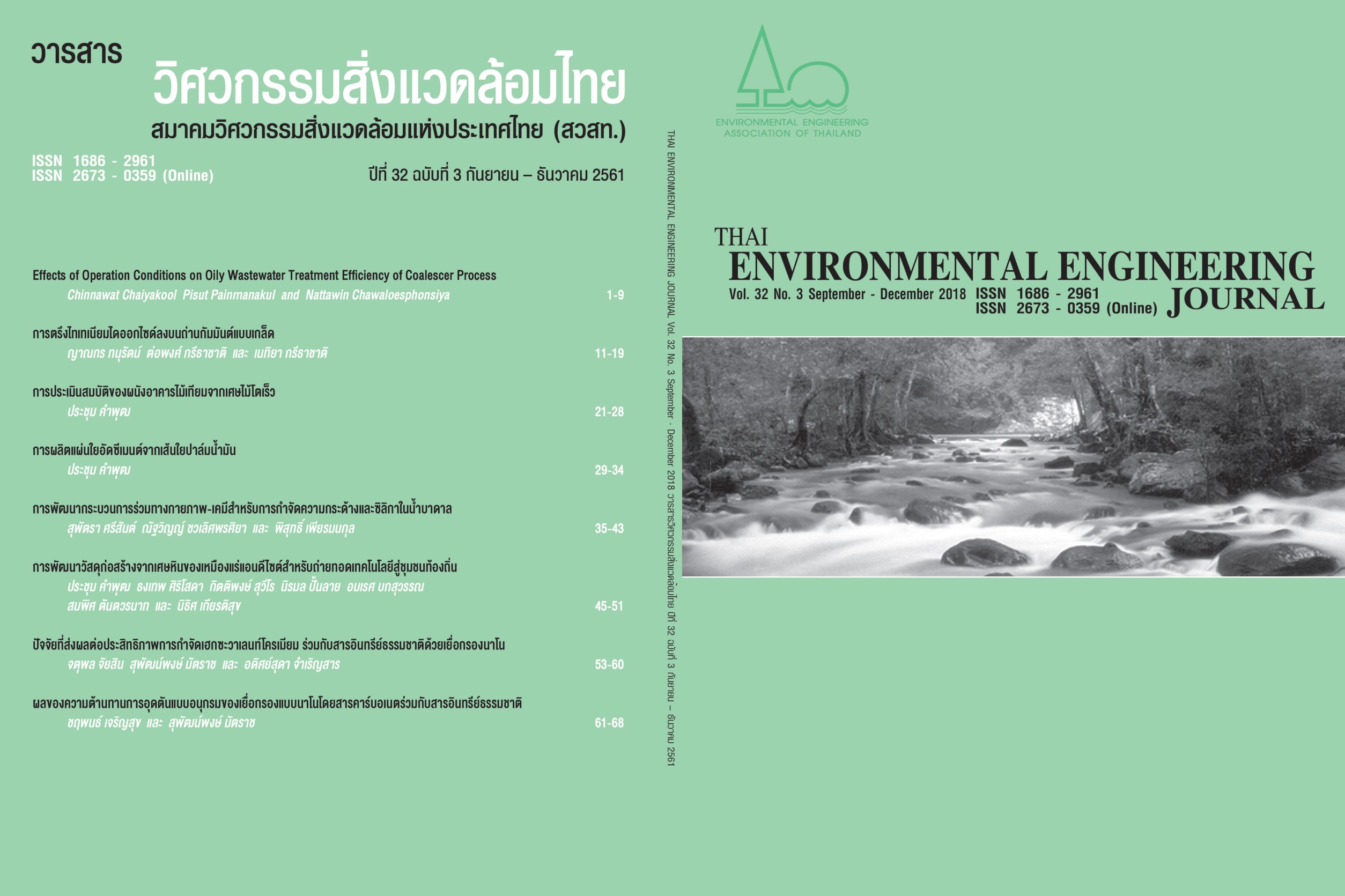Effect of Resistance-in-series Model on Nanofiltration of Combined Carbonate Species and Natural Organic Matter
Main Article Content
Abstract
This research studied the effect of resistance-in-series model on Nanofiltration (NF) of combined carbonate species and natural organic matter (NOM) using crossflow nanofiltration (HL4040FN, GE water and process technology). Solution condition was controlled with ionic strength of 0.004, 0.01, 0.05 and 0.1 M Na2CO3, combined with NOM concentration of 10 mg/L. Various solution pHs of pH 4.3 (H2CO3 equiv. pt.), 6.3 (pKa1), 8.3 (HCO3- equiv. pt.), 10.3 (pKa2) and 11.3 (CO32- equiv. pt.) were studied. Experimental results revealed that cake resistance (Rc) showed the highest resistance when compared with other types of resistance (Rg and Ra). Increased ionic strengths caused a lower solution flux, possibly due to an increased concentration at the membrane surface, corresponding to higher resistance value. Increased solution pHs resulted in similar trend with increasing ionic strengths, indicating higher solution flux decline, thus resulting in increased resistance, especially cake resistance.
Article Details
References
[2] Mattaraj, S. 2550. Water chemistry. Ubon Ratchathani University verlag. (in Thai)
[3] Bruggen, Bart Van der and Carlo Vandecasteele. 2003. Removal of pollutants from surface water and groundwater by nanofiltration: Overview of possible applications in the drinking water industry. Environ. Pollut. 122: 435-44.
[4] Conteras, A.E., Albert Kimb and Qilin lia. 2009. Combined fouling of nanofiltration membranes: Mechanisms and effect of organic matter. J. Membr. Sci. 327: 87-95.
[5] Listiarini, K., Darren, D. S. and James O. L. 2009. Organic fouling of nanofiltration membranes: Evaluating the effects of humic acid, calcium, alum coagulant and their combinations on the specific cake resistance. J. Membr. Sci. 332: 56-62.
[6] Siddiqui, M., G.L. Amy, J. Ryan and W. Odem. 2000. Membranes for the control of natural organic matter from surface water. Water Res. 34: 3355-3370.
[7] Tu, S., Varadarajan, R. and Massoud, P. 2005. A pore diffusion transport model for forecasting the performance of membrane processes. J. Membr. Sci. 265: 29-50.
[8] Vrouwenvelder, J. S., Kappelhof, J. W. N. M., Heijrnan, S. G. J., Schippers, J. C., and Van der Kooija, D. 2003. Tools for fouling diagnosis of NF and RO membranes and assessment of the fouling potential of feed water. Desalination. 157: 361-365.
[9] Jarusutthirak C., Mattaraj S. and Jiraratananon R. 2007. Factors affecting nanofiltration performances in natural organic matter rejection and flux decline. Sep. Purif. Technol. 58: 68-75.
[10] Allgeier S.C. and Summers R.S. 1996. Evaluating NF for DBP control with the RBSMT. Journal of American Water Works Association. 87: 87-99.
[11] Cho, J., Amy, G. and Pellegrino, J. 2000. Membrane filtration of natural organic matter: Comparison of flux decline, NOM rejection, and foulants during filtration with three UF membranes, Desalination. 127: 283-298.


